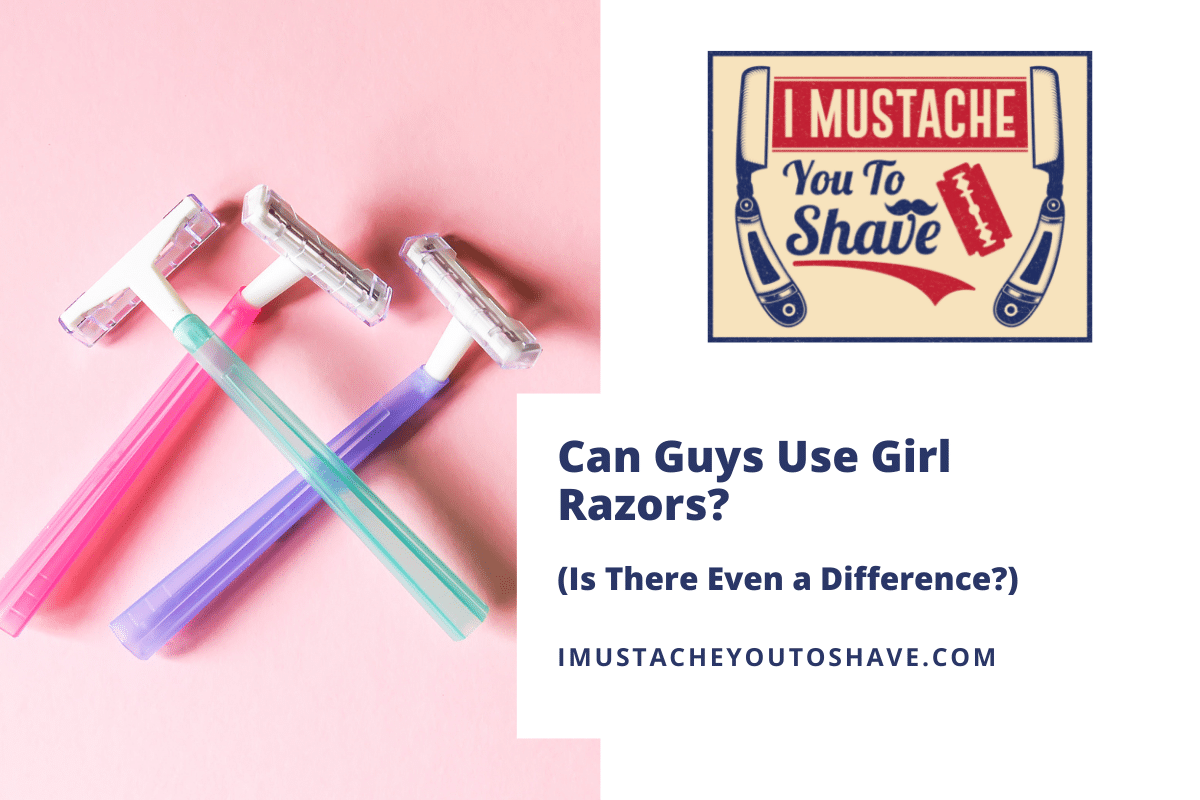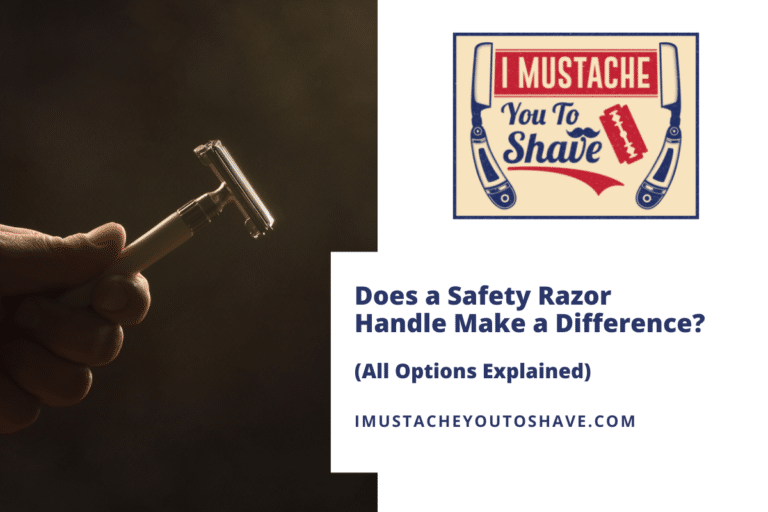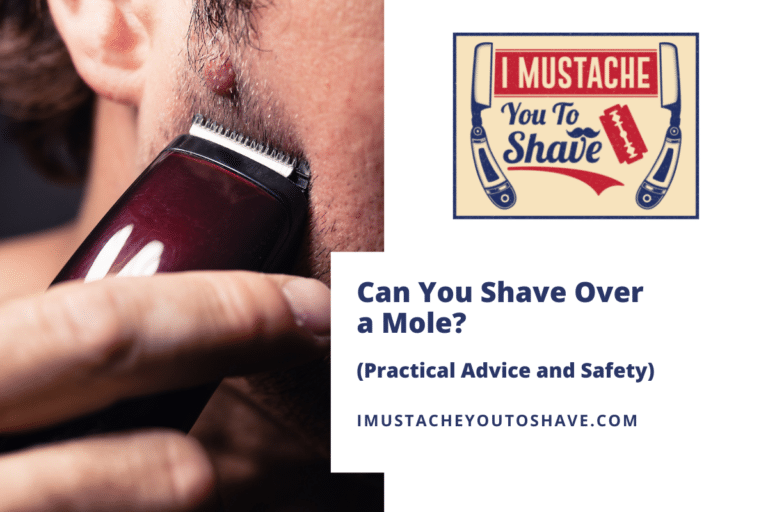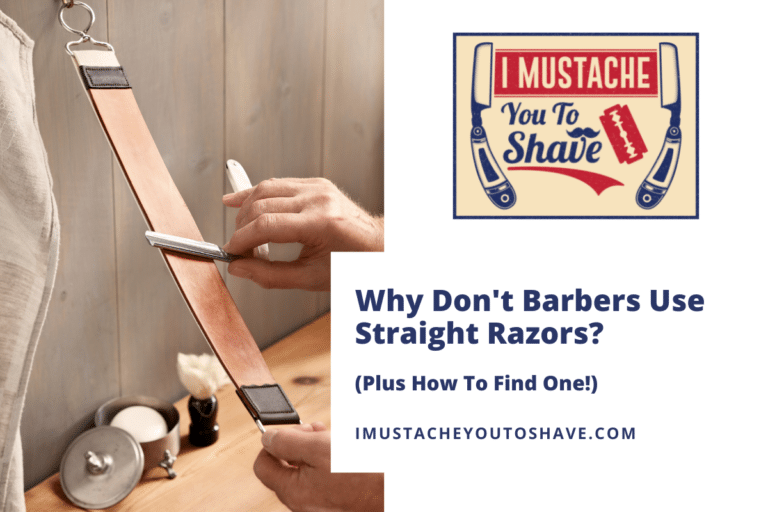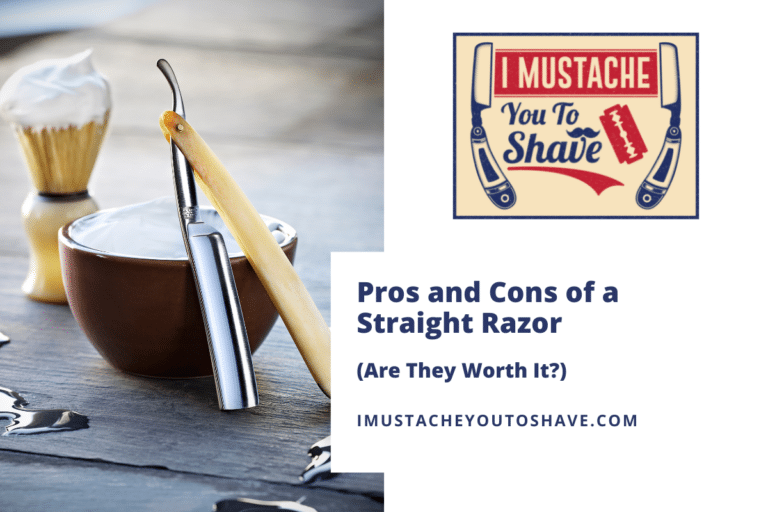Can Guys Use Girl Razors? (Is There Even a Difference?)
If you’ve run out of razor cartridges, is it really okay for guys to use women’s razors? By using a women’s razor, is there any real difference it makes during the shaving process?
Some brands market functionally identical razors for both men and women, whereas others have specific characteristics such as handle, head size or shape, and a moisturizer strip that may make shaving more difficult. In a pinch, men may use a woman’s razor to shave their beard, although it may affect the overall quality of your shave.
Keep reading the differences between men’s and women’s razors, how these differences can impact your shaving performance, whether they’ll impact your budget, and if it’s okay to share a razor with someone else.
Is it okay for a man to use a woman’s razor?
If you’ve ever gone to shave and realized you’re out of fresh razors, you’ve probably been tempted to borrow one from your significant other (or another family member). Is it worth asking for a loan, or should you just rock the stubble?
By and large, it is totally fine for a man to use a woman’s razor. Both men’s and women’s razors use a series of razor blades housed within a cartridge to cut hair. There is generally no increased risk for cuts or knicks associated with using a women’s razor.
There’s an assumption that women’s razors have duller or lower-quality razor blades so that women won’t cut themselves as easily. However, Gillette (the parent company of popular women’s shaving brand Venus) states the blades that go into Venus razors are the same blades that go into Gillette razors.
Some popular subscription companies, like Dollar Shave Club, have removed any gendered differentiation in their razors. They note that their product works equally well for both men and women.
Difference between men and women’s razors
If some companies don’t distinguish between men’s and women’s razors, what’s the real difference between using a man’s razor and a woman’s razor?
The difference between men’s and women’s razors largely lies in marketing and advertising, but there are some actual differences:
- Size
- Mousturizer strip
- Handle
- Packaging and aesthetics
Size
The biggest difference between men’s and women’s razors is usually the size of the razor head and its shape.
Women’s razors have a larger razor head since the razor is designed to shave body hair and cover more ground, while men’s razor heads are smaller. Additionally, women’s razors have a rounded head, allowing the razor to shave the body’s contours. Men’s razors are square, allowing for greater precision when shaving the face.
Dr. Jody Levine, director of dermatology at Plastic Surgery & Dermatology of NYC, notes that women’s razors are designed to follow the contours of a body, which is very different from the contours of a face.
Moisturizer Strip
Another difference is the moisturizer strip that exists on women’s razors.
This strip is located on the top part of the razor and is designed to moisturize the skin as the razor passes over it. For shaving the face, the moisturizer strip is bulky and reduces the ability of the razor to get in hard-to-reach places, specifically the upper lip and below the jaw bone.
Women typically shave in the shower and use body wash or soap to shave. As a result, the moisturizer strip adds a layer of emollients to the skin that helps lock in moisture for the top layer of skin.
For facial shaving, you use a shaving soap that already has plenty of moisturizers in it. Having the moisturizer strip could hinder your ability to shave tough spots while redundantly moisturizing your face.
Handle
Another large difference between men’s and women’s razors is the handle design.
Most women’s razors have more grip than men’s razors because they shave in the shower and often negotiate difficult-to-reach places like their legs. The handle is designed to have a better grip than a men’s razor.
Women’s razors achieve better grip by having ridged rubber or textured rubber attached to the handle.
Packaging and Aesthetics
Since Gillette started marketing razors to women in the early 20th-century, the focus on the packaging has been a key difference between men’s and women’s razors.
If you can get over the fact that women’s razors are pink and sold in pink packaging, you’ll be able to use a women’s razor, at least temporarily.
In fact, the original Milady Décoletté from Gillette looked almost exactly like the men’s razors from the day; however, the advertisements swapped out words like “shaving” for gentler words like “smoothing.” The satin and ivory packaging also worked to make the product more appealing to women.
Finally, Gillette placed the ads alongside dresses and bathing suit advertisements that showed more skin — thus, women began associating clothing that showed skin with needing to be hairless.
Can you use women’s razors to shave your face?
You can certainly use a women’s razor to shave your face if you are in a pinch.
Typically, a woman’s razor has the same number of blades, the same quality of blades, and the same sharpness as a man’s razor. Although there are many similarities, the bulkiness and size of the razor head on a women’s razor will impact your shaving performance.
Because the razor head is bigger, you may find it more difficult to shave certain parts of your face.
The biggest problem area for most men is the upper lip since the women’s razor head is usually bigger than the surface you’re trying to shave. Other problem areas are the sideburns and the area around the jaw bone.
Why are men’s razors cheaper than women’s?
If men’s and women’s razors are essentially the same, why are women’s razors so much more expensive?
While manufacturers and brands state the cost of making a women’s razor is higher, many consumers believe women’s razors are subject to a theoretical markup called a “pink tax,” typically a 20% markup on women-specific consumer goods.
In a statement made by a Gillette spokesperson, “Gillette and Venus products are different, designed to address different shaving needs while providing the best possible user experience…Pricing depends on a wide range of factors, including product technology, materials, demand, supply chain, and promotional activity.”
A study done by the Joint Economic Committee in the U.S. Congress found that the Schick Slim Twin disposable razors for women cost 51% more than the Schick Slim Twin disposable razors for men — citing very little material or design differences. The study attributes the price difference to variables like tariffs, product differentiation, price discrimination, and price-fixing.
Is it okay to share a razor?
If you decide to use a women’s razor, just make sure that you use a brand-new razor cartridge that won’t be shared with anyone else. Sharing razor cartridges is not only unhygienic, but it can be a possible health risk.
You always want to use a sharp, undamaged blade when you’re shaving. That’s why it’s always good practice to use a new razor or cartridge whenever you shave. This rule is even more true when sharing a razor with someone else.
If you or the last person to use the razor cut themself, you’re opening yourself up to possible infection or the transmission of bloodborne pathogens.
To ensure you don’t injure or give yourself an infection, always make sure you have a separate razor cartridge that no one else uses except for yourself.

